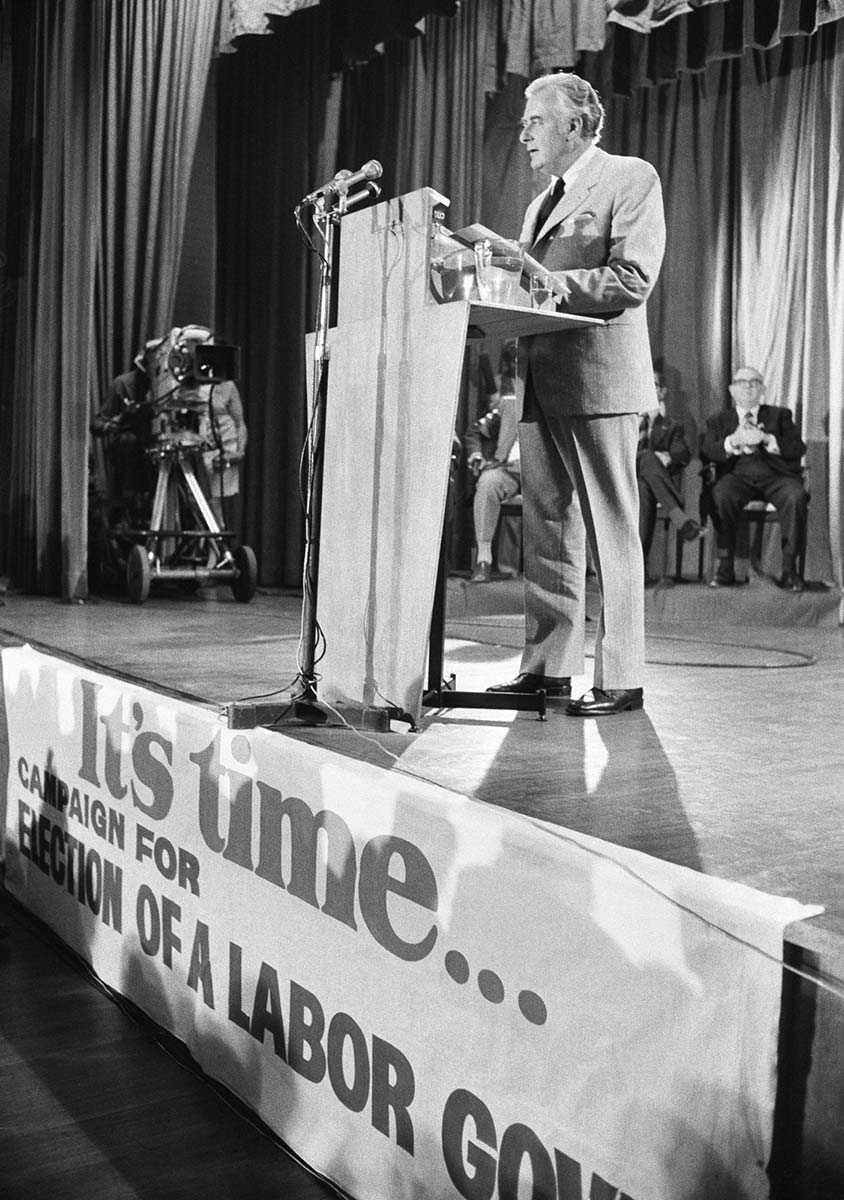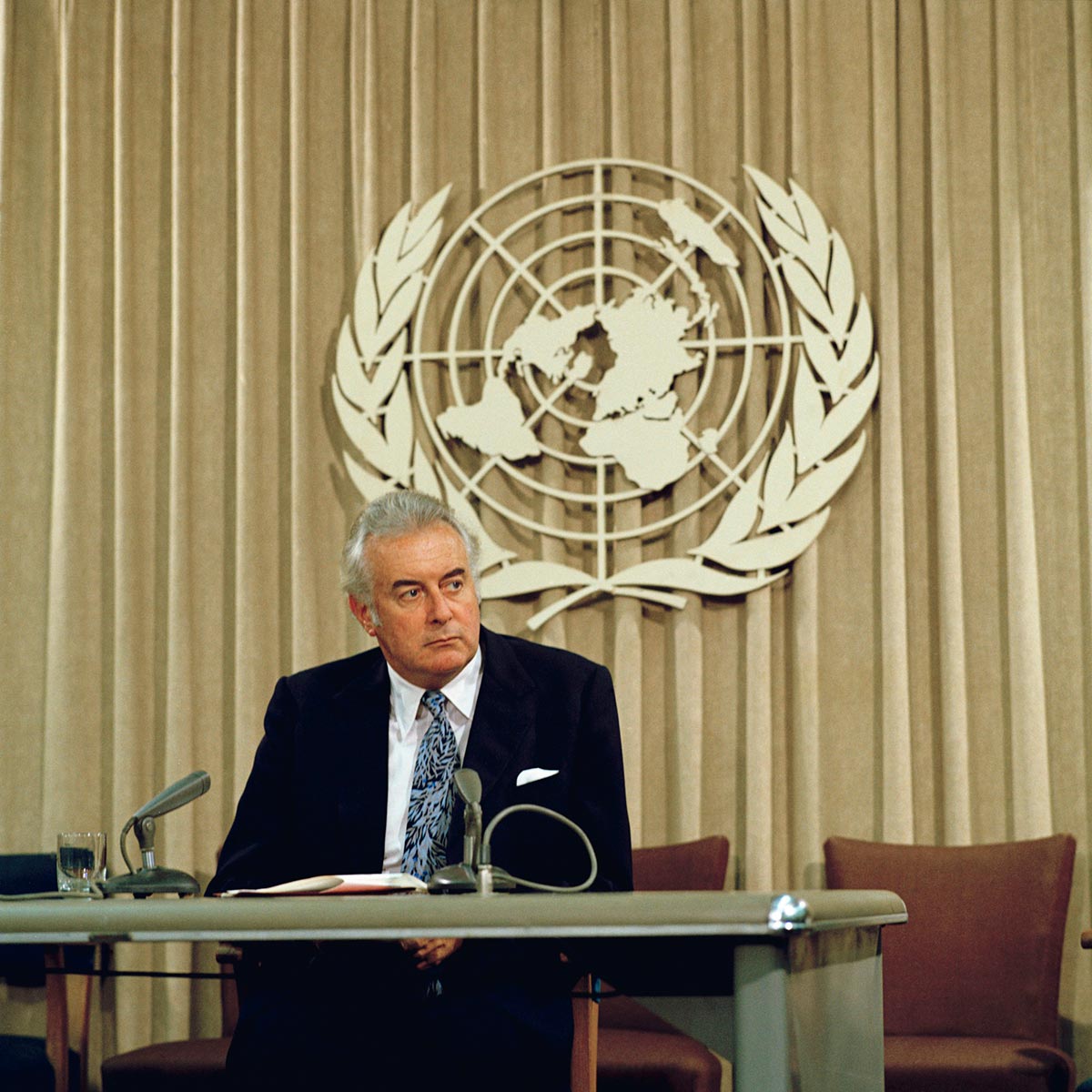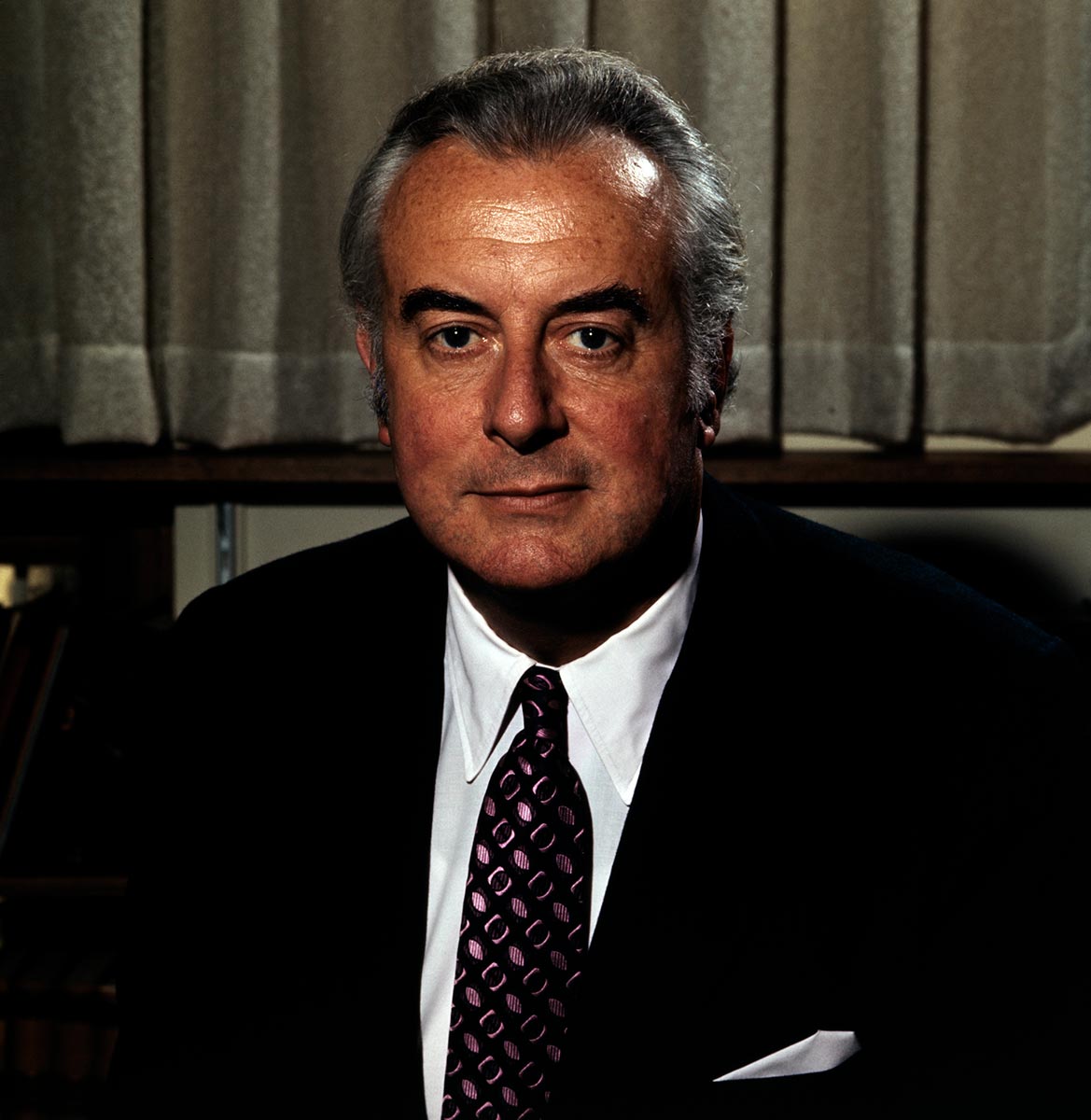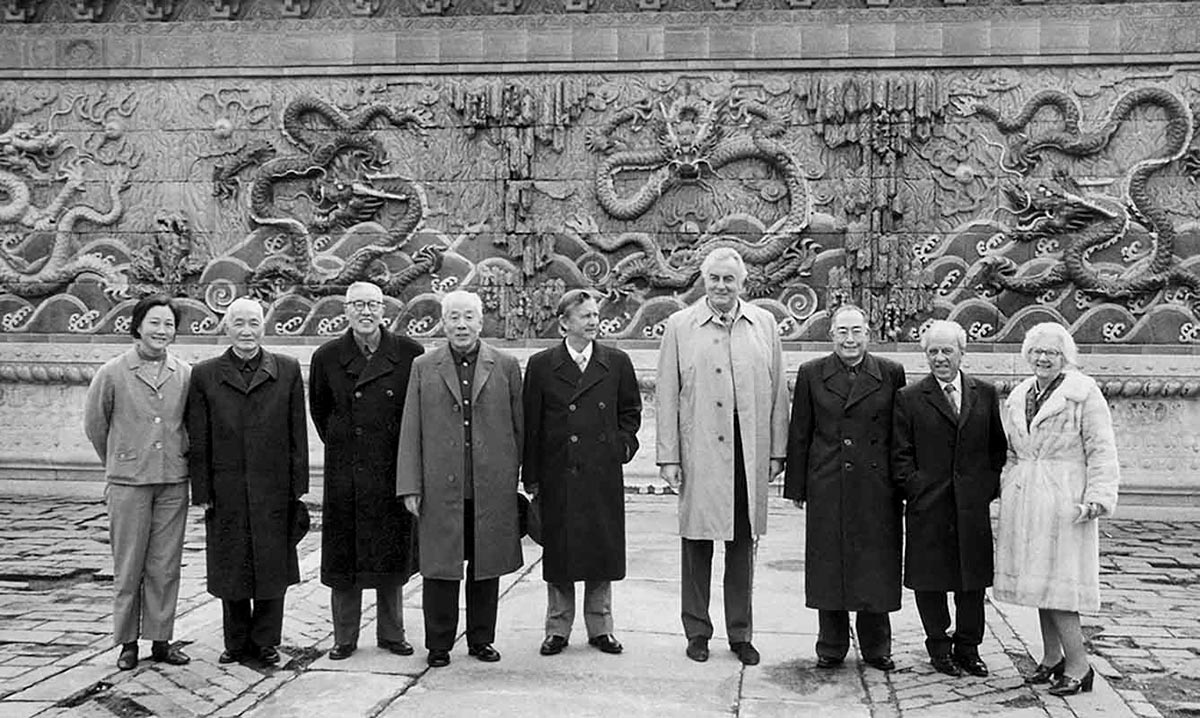On 5 December 1972 Gough Whitlam became Australia’s 21st Prime Minister, and the Australian Labor Party (ALP) formed its first government in 23 years.
The new government proved to be resolutely reformist and enacted an unprecedented amount of legislation that would do much to create a new Australian identity for the next decades.
The Whitlam government, however, was short-lived, being controversially dismissed by Governor-General Sir John Kerr on 11 November 1975.

Election of the Whitlam government
The Liberal–Country Party coalition held power in Australia from 1949 to 1972. Over that period they won nine consecutive elections and Robert Menzies became Australia’s longest-serving prime minister, 1949–66.
However, between Menzies’ retirement and the 1972 election, the coalition had four different leaders and their grip on political power in Australia waned.
Gough Whitlam
Following a comprehensive defeat in the 1966 election, the ALP removed Arthur Calwell as leader and turned to Edward Gough Whitlam, a former barrister who had served as a RAAF navigator during the Second World War.
Whitlam had been elected to the south Sydney seat of Werriwa in 1952 and had been deputy leader of the ALP since 1960.
Party reforms
Whitlam immediately began reforming the ALP in an effort to recreate it as a modern social democratic party.
He gradually pulled party power away from state executives and the socialist left wing of the party, whose members, he was convinced, were satisfied with being a party of protest and opposition, rather than a parliamentary power able to enact meaningful reform.
At the Victorian state ALP conference in 1967 Whitlam declared:
We construct a philosophy of failure, which finds in defeat a form of justification and proof of the purity of our principles. Certainly the impotent are pure.
In the 1969 election, Whitlam’s first in leadership, Labor registered a 7.1 per cent growth in their popular vote compared with the 1966 election, and they gained 18 more seats in the lower house.
Labor lost the election, falling four seats short of a majority. However, the significant increase in support gave Whitlam a mandate to implement a series of ALP federal policy reforms.
New policies
These new policies focused on ‘quality of life’ issues such as health, education and urban development.
The late 1960s was an era of change throughout the Western world. In Australia this brought fresh demands for civil rights, increased recognition of multiculturalism, protests over the Vietnam War, the rise of women’s liberation and calls for a change in foreign policy.
Whitlam’s policies around ‘cities, schools and hospitals’ proved attractive to younger Australians.

The 1972 campaign
The ALP’s success in the 1972 campaign was built upon three years of visible change concerning ‘the party, the policy and the people’.
The party had been restructured and a series of new policies instituted – and, finally, it had got that message across to the Australian people.
Labor’s 1971 election campaign was the first modern campaign in Australian history.
They adopted contemporary research and communications techniques to craft its key demographic and geographic messages, and employed an integrated marketing strategy (TV, radio, cinema and print advertising).
Everything came together under the slogan ‘It’s Time’ – first outlined in Whitlam’s campaign launch speech at Sydney’s Blacktown Civic Centre on 13 November 1972.
The main thrusts of the Labour campaign were an economic strategy that straddled public, private and government interests, the introduction of universal health care, a new minister of urban affairs to reduce land and housing costs, an end to military conscription and increases in funding for all areas of education.
The strategy was successful. On 2 December 1972 the ALP took 49.6 per cent of the primary vote and won a further eight seats in the House of Representatives. Three days later, Gough Whitlam became Australia’s 21st prime minister.
Reforms
In the 1,071 days the Whitlam government held office, it enacted 508 bills (including more than 200 in its first year). Major areas where the government affected change included:
- Community health and wellbeing (Medibank introduced; social security benefits and pensions increased; social housing increased)
- Education (Australian Schools Commission created; free tertiary education instituted)
- Indigenous Australia (Aboriginal Land Rights (Northern Territory) Act 1976 passed; Aboriginal Legal Service created; National Aboriginal Consultative Committee formed)
- Multiculturalism (citizenship requirements were standardised for all applicants; more support services added)
- Women’s rights (1972 equal pay case saw women receiving same pay for same work; Maternity Leave (Australian Government Employees) Act 1973 passed; adviser for women’s affairs appointed; Family Law Court of Australia created; Family Law Act 1975 implemented no fault divorce)
- International relations (established diplomatic relations with China; independence for Papua New Guinea)
- Vietnam abolished national service and withdrew last troops from Vietnam
- Politics and the law Commonwealth Electorate Act (No. 2) 1973 implemented more equal spread of voters across electorates; Australian Legal Aid Office created
- Economics (cut tariffs by 25 per cent; Trade Practices Act 1974 outlawed price fixing)
- Environment and heritage (Seas and Submerged Lands Act 1973 stopped proposed drilling in the Great Barrier Reef; established Australian Heritage Commission)
- The arts (Australian Council for the Arts formed)
Much of the legislation passed was radical for the time and represented a profound change in Australian society and culture.
Dismissal
The Whitlam government’s time in office, however, was not without controversy, and it ended abruptly – and controversially – on 11 November 1975, when the Labor government was dismissed by Governor-Sir General John Kerr.
In our collection
Explore defining moments
References
Dismissed! Museum of Australian Democracy
Brian Carroll, Whitlam, Rosenberg Publishing, Dural, NSW, 2011.
Jenny Hocking, Gough Whitlam: His Time, (updated ed.), The Miegunyah Press, Carlton, Vic., 2014.
Gough Whitlam, The Truth of the Matter, (3rd ed.), Melbourne University Press, Melbourne, 2005.

